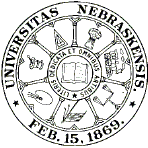
University Studies (University of Nebraska) (1888–1984)
Date of this Version
1924
Citation
UNIVERSITY STUDIES VOL. XXIV JULY-OCTOBER, 1924 Nos. 3-4
Abstract
The State of Arizona is marked by a great series of cliffs that extend from the mouth of the Grand Canyon of the Colorado River in the northwestern part of the state southeastward into New Mexico. This line of cliffs, rising 1000 to 4000 feet above the desert plains forms the southwestern and southern boundary of the great physiographic province called the Colorado Plateaus. It is roughly circular and includes northeastern Arizona, northwestern New Mexico, western Colorado, and a large part of Utah. This province is subdivided by a number of deep canyons and high cliffs into numerous plateaus. The southwestern part, south of the Colorado River and west of the Little Colorado River, dominated by San Francisco Mountain (12,611 feet in elevation), is known as the San Francisco Plateau. East of this plateau, between the San Juan and the Little Colorado-Puerco rivers, lies the Navajo Country.
The purpose of this paper is to describe the vegetation of portions of the Navajo Country and the San Francisco Plateau and to attempt to correlate the widely varying vegetational types with environmental factors. The most intensive work was carried on near Flagstaff in the Pinus-Pseudotsuga Formation, in the Pinus-Juniperus Formation, in the Stipa-Bouteloua Formation, and in the Atriplex-Artemisia Formation; the last three lying east and northeast of Flagstaff. The field studies were conducted during the summers of 1922 and 1923. While considerable work had already been done by Pearson (1913, 1920, 1923) and others on the western yellow pine forest, nothing beyond brief reconnaissance work has been done on the vegetation as a whole.

